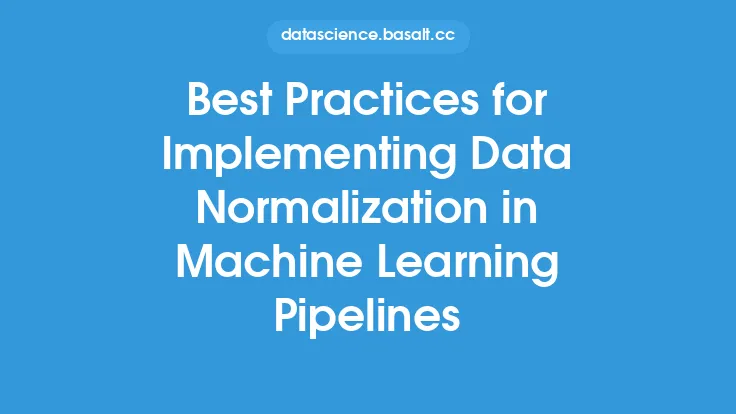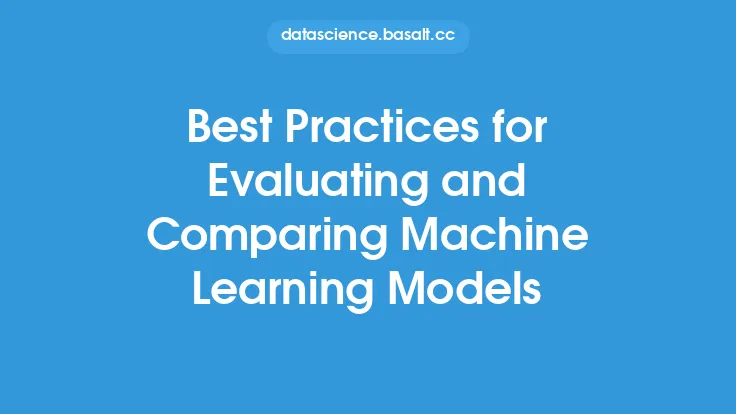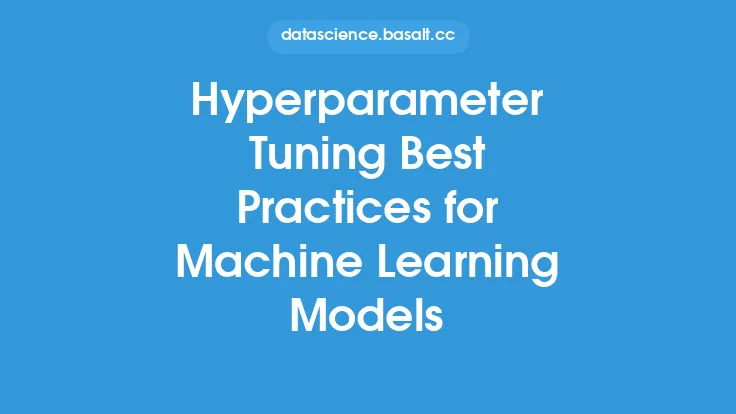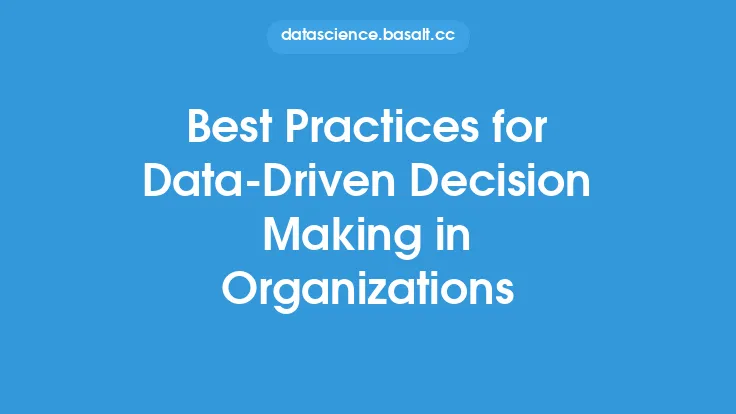Validating data in machine learning models is a critical step in ensuring the accuracy, reliability, and generalizability of the results. Machine learning algorithms are only as good as the data they are trained on, and poor data quality can lead to biased, inaccurate, or misleading models. In this article, we will discuss the best practices for validating data in machine learning models, including data preprocessing, feature engineering, and model evaluation.
Introduction to Data Validation in Machine Learning
Data validation in machine learning involves checking the data for errors, inconsistencies, and anomalies to ensure that it is accurate, complete, and consistent. This step is crucial in machine learning because the algorithm will learn patterns and relationships in the data, and if the data is flawed, the model will be flawed as well. Data validation involves a range of techniques, including data cleaning, data transformation, and data normalization. The goal of data validation is to ensure that the data is in a suitable format for modeling and that it accurately represents the underlying patterns and relationships in the data.
Data Preprocessing for Validation
Data preprocessing is a critical step in data validation. It involves cleaning, transforming, and normalizing the data to prepare it for modeling. Data preprocessing techniques include handling missing values, removing duplicates, and encoding categorical variables. Handling missing values is a critical step in data preprocessing because missing values can significantly impact the accuracy of the model. There are several techniques for handling missing values, including mean imputation, median imputation, and regression imputation. The choice of technique depends on the nature of the data and the type of model being used.
Feature Engineering for Validation
Feature engineering is the process of selecting and transforming the most relevant features from the data to use in the model. Feature engineering is critical in data validation because it helps to reduce the dimensionality of the data and improve the accuracy of the model. Feature engineering techniques include feature selection, feature extraction, and feature construction. Feature selection involves selecting the most relevant features from the data, while feature extraction involves transforming the data into a new set of features that are more relevant for modeling. Feature construction involves creating new features from the existing features.
Model Evaluation for Validation
Model evaluation is a critical step in data validation. It involves evaluating the performance of the model on a holdout dataset to ensure that it generalizes well to new, unseen data. Model evaluation techniques include metrics such as accuracy, precision, recall, and F1 score. These metrics provide a quantitative measure of the model's performance and help to identify areas for improvement. Model evaluation also involves techniques such as cross-validation, which involves splitting the data into training and testing sets and evaluating the model's performance on the testing set.
Techniques for Validating Data
There are several techniques for validating data in machine learning models, including data visualization, statistical analysis, and data quality metrics. Data visualization involves using plots and charts to visualize the data and identify patterns and relationships. Statistical analysis involves using statistical techniques such as hypothesis testing and confidence intervals to evaluate the significance of the results. Data quality metrics involve using metrics such as data completeness, data consistency, and data accuracy to evaluate the quality of the data.
Best Practices for Data Validation
There are several best practices for data validation in machine learning models, including using a holdout dataset, using cross-validation, and using data quality metrics. Using a holdout dataset involves setting aside a portion of the data for testing and evaluating the model's performance on the testing set. Using cross-validation involves splitting the data into training and testing sets and evaluating the model's performance on the testing set. Using data quality metrics involves using metrics such as data completeness, data consistency, and data accuracy to evaluate the quality of the data.
Common Challenges in Data Validation
There are several common challenges in data validation, including handling missing values, handling outliers, and handling imbalanced data. Handling missing values involves using techniques such as mean imputation, median imputation, and regression imputation to replace missing values. Handling outliers involves using techniques such as winsorization and trimming to reduce the impact of outliers on the model. Handling imbalanced data involves using techniques such as oversampling the minority class, undersampling the majority class, and using class weights to adjust the importance of each class.
Future Directions in Data Validation
There are several future directions in data validation, including the use of automated data validation techniques, the use of data quality metrics, and the use of explainable AI techniques. Automated data validation techniques involve using machine learning algorithms to automatically validate the data and identify errors and inconsistencies. Data quality metrics involve using metrics such as data completeness, data consistency, and data accuracy to evaluate the quality of the data. Explainable AI techniques involve using techniques such as feature importance and partial dependence plots to provide insights into the model's decisions and identify areas for improvement.
Conclusion
Data validation is a critical step in machine learning that involves checking the data for errors, inconsistencies, and anomalies to ensure that it is accurate, complete, and consistent. The best practices for data validation include using a holdout dataset, using cross-validation, and using data quality metrics. Common challenges in data validation include handling missing values, handling outliers, and handling imbalanced data. Future directions in data validation include the use of automated data validation techniques, the use of data quality metrics, and the use of explainable AI techniques. By following these best practices and using these techniques, data scientists can ensure that their machine learning models are accurate, reliable, and generalizable, and provide valuable insights into the underlying patterns and relationships in the data.





